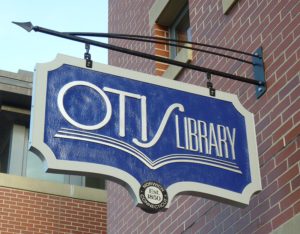The decades of the early nineteenth century marked the pinnacle of the First Industrial Revolution and the beginning of a major transformation in the transportation industry in New England. In August of 1832 construction began on a railroad route between Boston and Worcester. Inspired by this railroad development project, a group of prominent investors vigorously supported a Connecticut state assembly charter to build a railway route between Norwich and Worcester.
A Massachusetts state assembly charter likewise supported a plan to link Worcester to Norwich via a rail route. In 1835 the strategic plans of both charters were merged into one venture officially renamed the Norwich & Worcester Railroad Company. Connecticut was responsible for building the rail route between Norwich and Plainfield with Massachusetts constructing the railway connecting Plainfield and Worcester. The overarching vision was to create a transportation system between Boston and New York City. The railway transportation system would allow the travel of people and cargo between Boston and Norwich before connecting with the swift steamship transport services from Norwich to New York.
Construction of the Norwich to Plainfield portion of the railway was completed in 1839 and the Plainfield to Worcester branch in 1840. That same year the Norwich & Worcester Railroad purchased two passenger steamships, the Worcester and the New York to provide passage between Norwich and New York City. The cost of the entire nearly decade-long project totaled approximately 1.5 million dollars. The railroad company struggled financially in the early 1840’s garnering lower than expected revenues. Part of the problem occurred during winter when steamships were unable to enter upper part of the Thames River near the Norwich harbor due to thick ice. In 1843, the railroad built a six-mile length of track southward on the east bank of the river at Allyn’s Point which allowed for connections year round. This structural addition increased train and steamship passenger and cargo traffic and significantly improved revenues for the company.
The railroad route was designed with the principal intention of enhancing not only the economy of Norwich but the more rural regions along the Shetucket and Quinebaug rivers. The layout of the railroad route wound through the industrial river valleys where dozens of small textile factories were located in eastern Connecticut and Massachusetts. Many communities along this rail route experienced the economic benefits of having a direct link to the larger markets for the goods they produced.
By 1840, Norwich was the largest manufacturing center in the state of Connecticut according to a report by the office of the Secretary of State. Blessed with rivers that provided abundant water power, the textile industry was beginning to expand with the Shetucket Mills and the Norwich Bleaching and Calendaring Company experiencing rapid growth. The Chelsea Manufacturing Co. in Greeneville was in the incipient stages of becoming one of the largest manufacturers in the world of quality paper.
The development of the gun manufacturing industry in Norwich during the 1840’s was inextricably linked to the Norwich & Worcester Railroad. The increased demand for firearms as the population of the U.S. expanded westward facilitated Norwich gun makers, who took advantage of their regional accessibility to both the New York and Boston markets. Early gun manufacturers such as Allen & Thurber and Bacon & Company started businesses in Norwich and established a business template for gun making companies to set up factories in the city during this frenetic period of growth.

